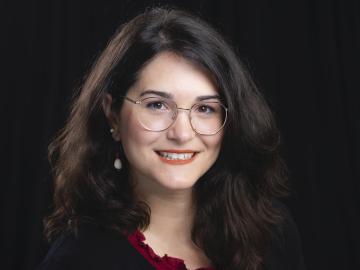
Filter News
Area of Research
- Advanced Manufacturing (2)
- Biological Systems (1)
- Biology and Environment (56)
- Building Technologies (1)
- Clean Energy (64)
- Computational Engineering (1)
- Computer Science (2)
- Electricity and Smart Grid (1)
- Energy Sciences (1)
- Fuel Cycle Science and Technology (1)
- Fusion and Fission (20)
- Fusion Energy (3)
- Isotope Development and Production (1)
- Isotopes (16)
- Materials (78)
- Materials Characterization (2)
- Materials Under Extremes (1)
- National Security (28)
- Neutron Science (33)
- Nuclear Science and Technology (2)
- Supercomputing (73)
Date
News Topics
- 3-D Printing/Advanced Manufacturing (33)
- Advanced Reactors (6)
- Artificial Intelligence (48)
- Big Data (20)
- Bioenergy (33)
- Biology (41)
- Biomedical (12)
- Biotechnology (11)
- Buildings (27)
- Chemical Sciences (38)
- Clean Water (9)
- Climate Change (52)
- Composites (10)
- Computer Science (44)
- Coronavirus (4)
- Critical Materials (10)
- Cybersecurity (9)
- Decarbonization (51)
- Education (4)
- Emergency (2)
- Energy Storage (30)
- Environment (63)
- Exascale Computing (21)
- Fossil Energy (5)
- Frontier (25)
- Fusion (15)
- Grid (23)
- High-Performance Computing (48)
- Hydropower (3)
- Irradiation (2)
- Isotopes (22)
- ITER (1)
- Machine Learning (24)
- Materials (73)
- Materials Science (31)
- Mathematics (6)
- Mercury (2)
- Microelectronics (3)
- Microscopy (9)
- Molten Salt (1)
- Nanotechnology (9)
- National Security (37)
- Net Zero (11)
- Neutron Science (42)
- Nuclear Energy (31)
- Partnerships (36)
- Physics (19)
- Polymers (9)
- Quantum Computing (23)
- Quantum Science (21)
- Renewable Energy (2)
- Security (5)
- Simulation (43)
- Software (1)
- Space Exploration (7)
- Statistics (2)
- Summit (13)
- Sustainable Energy (34)
- Transportation (30)
Media Contacts

Nature-based solutions are an effective tool to combat climate change triggered by rising carbon emissions, whether it’s by clearing the skies with bio-based aviation fuels or boosting natural carbon sinks.

With the world’s first exascale supercomputing system now open to full user operations, research teams are harnessing Frontier’s power and speed to tackle some of the most challenging problems in modern science.

As renewable sources of energy such as wind and sun power are being increasingly added to the country’s electrical grid, old-fashioned nuclear energy is also being primed for a resurgence.

As a biogeochemist at ORNL, Matthew Berens studies how carbon, nutrients and minerals move through water and soil. In this firsthand account, Berens describes recent fieldwork in Louisiana with colleagues.

In mid-April, students from Webb School of Knoxville taking an advanced science class that focuses on quantum computing topics visited the Department of Energy’s Oak Ridge National Laboratory to tour its world-class facilities and discover the many career paths available in the ever-growing field of quantum information science.

Colleen Iversen, ecosystem ecologist, group leader and distinguished staff scientist, has been named director of the Next-Generation Ecosystem Experiments Arctic, or NGEE Arctic, a multi-institutional project studying permafrost thaw and other climate-related processes in Alaska.

Researchers used Oak Ridge National Laboratory’s Quantum Computing User Program to perform the first independent comparison test of leading quantum computers.

Kelly Chipps, a nuclear astrophysicist at ORNL, has been appointed to the Nuclear Science Advisory Committee, or NSAC. The committee provides official advice to DOE and the National Science Foundation, or NSF, about issues relating to the national program for basic nuclear science research.

ORNL’s electromagnetic isotope separator, or EMIS, made history in 2018 when it produced 500 milligrams of the rare isotope ruthenium-96, unavailable anywhere else in the world.

Eva Zarkadoula, an R&D staff member at ORNL's Center for Nanophase Materials Sciences, has been named guest editor in a special issue on "Interface Engineering and Property Functionalization" for JOM.


